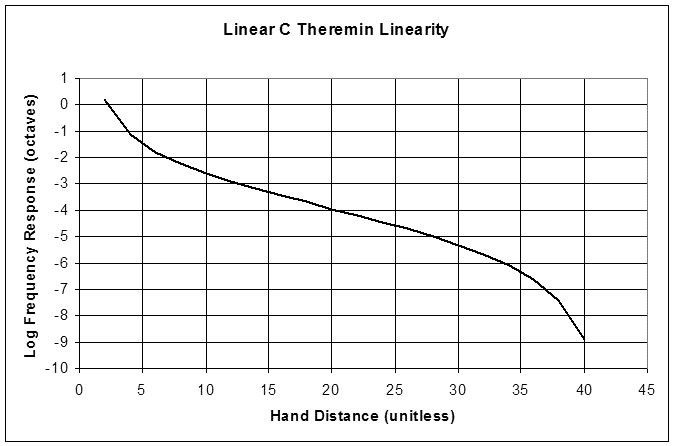There's an updated Theremin Simulation spreadsheet up:
http://www.mediafire.com/?bgzc363ctdcx8rk
- Revision History -
2012-1-22 : v5
> Added Cin and tank_mode=2 to "Frequency Response" and "Full Sim" worksheets.
> Major cleanup of "Frequency Response" and "Full Sim" worksheets, VB now runs faster.
I wanted to investigate a purely CMOS oscillator (e.g. no FPGA DPLL) like that used by Andrey Smirnov in his D-sensor:

The 6.2k resistor and 470 pF capacitor RC network gives 90 degrees of phase lag, the LC tank gives another 90 degrees, and the odd number of inverters string gives 180 degrees, so it should oscillate. The RC network is a low pass filter, which could help suppress the upper resonance point (there are 2 in tank_mode=0 and you want to use the lower one) and the RC time constant is fairly uncritical, so it might be a handy point at which to do temperature compensation. Interestingly, Andrey couples the EQ coil and tank coil - I'm not quite sure what the effect of that would be, but it isn't necessary for oscillation.
So there is a new component Cin and tank_mode=2 in the simulation, which is the same as tank_mode=0 but the resonance phase is evaluated at 180 degrees rather than quadrature:

Cin, Z0, and Ctank form a Pi network. To make this oscillate, Vtank is inverted and used to drive Vin. Andrey uses identical values for Cin and Ctank. I use a larger value for Cin and a very small value for Ctank, which gives more voltage swing across Ctank (which is knocked down with a capacitive voltage divider for feedback, not shown) and therefore more voltage swing at the antenna, along with higher sensitivity. From the limited amount of simulation I've done with tank_mode=2, setting the -3dB RC point to roughly 1/2 of the operating frequency seems to be in the ballpark.
Andrey uses a 4069N for the inverters, which I believe is standard slow CMOS. Two potential problems with that are significant delay through the string of inverters which adds phase shift, and poor current drive. I'm using a 74LVU04N which is quite a bit faster and has much better current drive.
[EDIT] Thinking more about Andrey's circuit, he uses roughly a 10:1 turns ratio on the transformer. This is kind of like an auto-transformer, so I believe there will be roughly 10x the tank swing at the antenna. It's kind of ingenious. If he can get away with not putting a ferrite slug in that coil (not sure here) there wouldn't be much drift. By using equal caps on the two sides of the drive/sense winding the I/O swing is about the same so no need to reduce the sense side with a voltage divider.
The same tank swing magnification can be done via imbalanced caps as I described above and/or imbalanced individual inductors (EQ & Tank) without coupling. Whether the sensitivity is the same, I can't say. Though Andrey is dividing the output down and running the resulting audio square wave to a sound card for measuring, so he must have the same needs that I do in terms of resolution and sensitivity.








